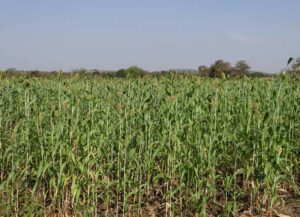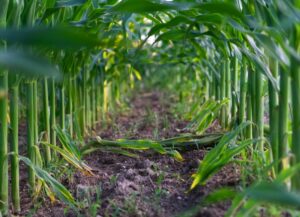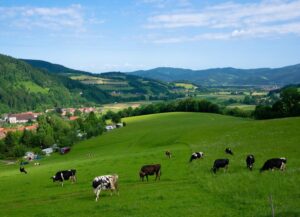Alvaro Garcia
Good corn silage hybrids have high yields, high energy, high digestibility, and good animal performance. Critical to maximize silage yields is the selection of the right variety. Similarly, agronomical practices can change not only corn silage yield per hectare but also its nutritive value.
With lower corn silage yields, there is a greater need for livestock supplementation, which increases feed costs. Since starch is deposited in the kernels, the amount of grain in the ration is associated with the energy content of the silage. In the past, the rule of thumb for the corn silage grain-to-forage ratio was 50:50.
Improved grain yields of modern corn hybrids is because of the increased optimum plant population rather than the improved grain yield per plant. Recent research has focused in the ideal plant density per hectare since it affects the nutritive value of the corn plant.
Corn silage is the primary source of energy and fiber for dairy cows in many parts of the US and the world. The quality of the silage can be affected by modifying plant density. In the past corn silages hybrids were selected for high tonnage per hectare without paying much attention to the digestible organic matter per hectare.
It is well known that increasing corn plant density (more plants) to suggested rates increases dry matter (DM) yields. Decreasing plant density however allow for greater light penetration between plants, increased photosynthesis, and additional nutrient uptake by the root system. As a result, while higher plant densities produce higher biomass per hectare, they also incur in plant competition for nutrients and sunlight/photosynthesis.
Lower densities allow for greater individual growth, adding more starch deposition in the kernels and widens the plant stalks. Wider stalks also increase the proportion of the more digestible inner stalk material in relation to the less digestible stem protective outer layers (epidermis and cortex). The ideal corn plant density then is determined by a tradeoff between total plants/hectare and quality of the individual plants.
As a result, while increasing plant density per hectare may improve tonnage, it may also be negatively correlated with corn silage quality. This has been determined by measuring the nutrient concentration in corn plants cultivated at high or low densities. Higher density corn silages have resulted in less crude protein (CP), crude fat (Fat), and N free extract (NFE), but higher neutral‐detergent fiber (NDF), and acid‐detergent fiber (ADF) which result in reduced intake and digestibility.
A study conducted (Han et al. 2019) between 2017 and 2018 at the Shandong Agriculture University Farm Station in Taian, Shandong Province, China, evaluated the effects of plant density on corn silage quality and yield per ha.
The corn hybrid used had 117‐day growing period, was a semi‐compact plant type, with great resistance to stem rot and large spot, and harvested at dent stage at a moisture content of 66%. The experimental design was a randomized complete block design including five plant density treatments (52,500, 60,000, 67,500, 75,000, and 82,500 plants per ha) with three replications.
A total of 15 plots (6 by 6 m), with 10 rows of corn in each plot (60‐cm row spacing), were arranged randomly in three blocks. As measured along a row, plant spacing was 31.7, 27.8, 24.7, 22.2 or 20.2 cm, corresponding to a plant density of 52,500, 60,000, 67,500, 75,000, and 82,500 plants per ha, respectively.
Increasing the plant density increased whole plant yield
Plant height and leaf area increased, while stem diameter, chlorophyll, and leaf area per plant decreased with increasing plant density. Both the biomass yield, expressed as dry matter (DM) per ha, and the utilizable energy yield improved when the density was increased from 67,500 to 75,000 plants per ha, but increasing the density further reduced these values. The highest observed DM yields were 17,734 kg per ha and 17,055 kg per ha.
Feeding quality generally decreased with increasing plant density. The plant density which obtained the highest biomass yield was not the same as the plant density for optimizing feeding production. Increasing the plant density to the appropriate commercial suggestions increased whole plant yield but lowered forage quality and feeding efficiency.
Excessive plant density reduced biomass yield and total NEL. The plant density that achieved the highest total NEL decreased biomass yield by 4–6% but increased the total NEL by about 1% which improved the whole forage quality.
When evaluating the optimal plant density, it should be considered that the plant density that achieved the maximum total NEL was more effective compared to the plant density with maximum forage yield. The recommended plant density for corn silage was 74,750 and 74,664 plants per ha in 2017 and 2018, respectively.
Referencia
Kun Han, Baoshen Liu, Peng Liu, Zhonghua Wang. The optimal plant density of maize for dairy cow forage production. Agronomy Journal. 2020;112:1849–1861.
© 2020 Dairy Knowledge Center. All Rights Reserved.









